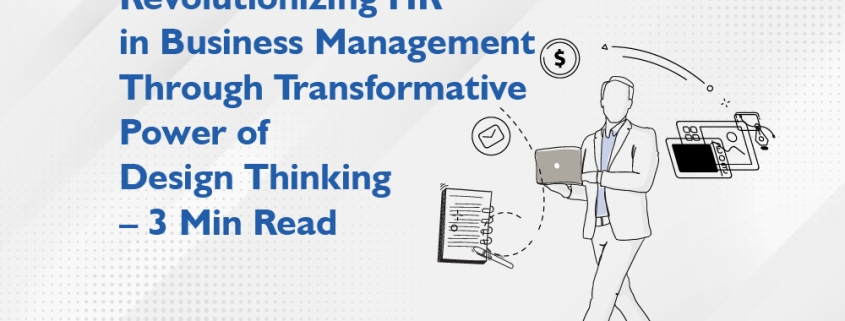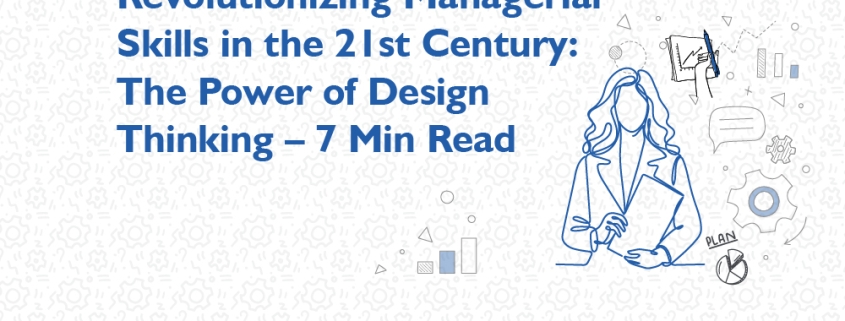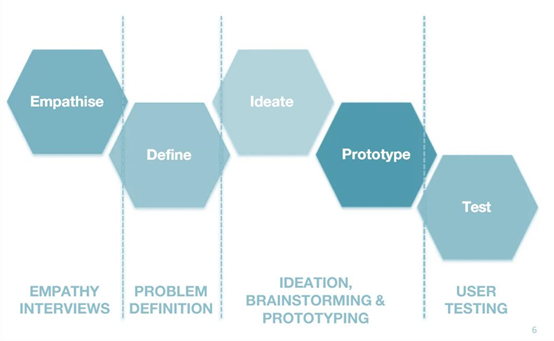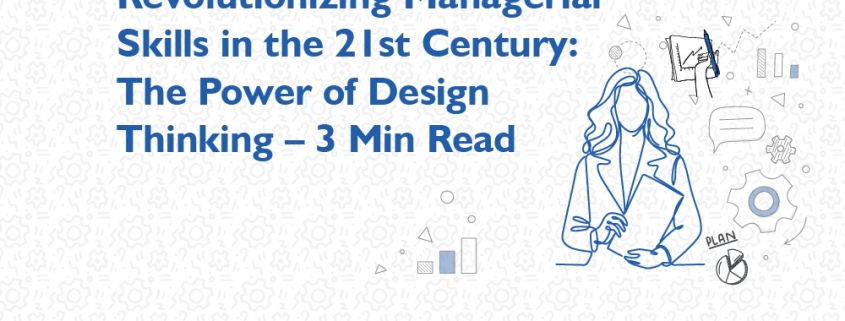Revolutionizing HR in Business Management Through Transformative Power of Design Thinking – 7 Min Read
Revolutionizing HR in Business Management Through Transformative Power of Design Thinking
The integration of Design Thinking into Human Resources (HR) represents a transformative force in modern business management. This paper explores the impactful fusion of Design Thinking and Human Resources (HR) within contemporary business management, showcasing its transformative influence on organizational growth. Design Thinking, rooted in understanding, observation, empathy, ideation, prototyping, and testing, offers a novel perspective on complex HR challenges. Real-world examples highlight its effectiveness in HR contexts.
Globalization, political shifts, and technological advancements shape organizational landscapes, posing challenges, especially for smaller entities with limited resources hindering employee skill development. Comprehensive training emerges as vital for growth in such contexts.
Design thinking is a problem-solving approach that prioritizes empathy for the end-user, encouraging a deep understanding of their needs and experiences. It typically involves a cyclical process of stages, including empathizing with users, defining the core problem, ideating to generate multiple solutions, prototyping to visualize ideas, testing to gather feedback, and implementing the final solution. This iterative and human-centered process fosters creativity, collaboration, and innovation, allowing for the development of effective and user-focused solutions to complex challenges.

Figure 1 Design Thinking Process • Understanding: Understanding of HR practices, Technology, Human Preferences, and, trends.
- Observation: 360-degree observation is done i.e., the physical workspace, individuals, and the activities they are engaged in.
- Empathy: Empathizing with stakeholders needs & challenges. This phase cultivates in-depth comprehension of the issues at hand and the stakeholders impacted by them.
- Problem Definition: Process of articulating clear, precise & comprehensive problem/possibility statement from a holistic perspective.
- Ideation: Is a systematic procedure of generating plethora of ideas. A wide spectrum of ideas are contemplated, both radical and incremental, finally selecting the top ideas.
- Prototyping: This is the development of a model/concept of the proposed idea. In order to bring ideas to the real world for the real people. Leading solution and action plans.
- Testing: The iterative process of Design Thinking is consistently applied until solution is accepted
by the stakeholders through rapid prototyping and testing the viability of the solution.
In the contemporary business landscape, the role of employees as star-performers has become pivotal in driving innovation and ensuring the seamless operation of Human Resource Management Systems (HRMS). This trend is fostering the development of cutting-edge products and services that not only streamline HR processes but also significantly enhance the efficiency and effectiveness of the workforce. Moreover, in response to the evolving demands of the workforce, organizations are increasingly focusing on crafting a comprehensive employee value proposition, aiming to cultivate an engaging, adaptive, and innovative work culture that mitigates job dissatisfaction and reduces attrition rates. This paradigm shift within HR is further amplified by the integration of emerging technologies into best HR practices, thereby enabling businesses to stay ahead in the dynamic landscape of globalization and adapt to the growing demand for hyper-personalization in the workplace.
Following are the Research objectives:
- Employees being star-performers, creating products & services easing the HRMS, enhancing efficiency & effectiveness of workforce
- Developing a comprehensive employee value-proposition, creating more engaging, adaptive & innovative work-culture, reducing job dissatisfaction, attrition
- Integrating emerging-technologies to HR best practices
- Globalization
- Hyper-personalization
The research methodology adopted constituted a fusion of qualitative and quantitative research design. A select cohort of students, immersed in the realm of Design Thinking, underwent both collective and individual questioning sessions. Progressing through each phase, the students were interviewed to elucidate their evolving comprehension of the organizational paradigm. During the observational phase, the students were tasked with constructing canvases, extracting insightful observations from their field experiences. In the empathy phase, personas and journey maps were crafted, supplemented by in-depth interviews uncovering latent perspectives. Articulating problems with precision, the students harnessed various tools to generate viable solutions, culminating in the prototyping stage. Rigorous testing with stakeholders ensued, ultimately yielding a comprehensive solution and a strategic action plan.
The teams came up with the following solutions:

Figure 2 Team one’s Problem, Solution representation on the core issue of Talent retention

Figure 3 Team one’s Prototypes and Solutions to the HR challenge

Figure 3 Team two’s Problem Statement, and the proposed EVP

Figure 4 Team Two’s prototype as a Gamified Onboarding for HR
Other teams worked on the following:
Performance enhancement of work force (client centric workforce) by 10%
Solution: One team talked with the client work team -> and co-ordinated with the development team. They brought internal teams together. Four generations working under the same roof. Where the mental models were studied of various generations related to professional work, environment, team work, suggestions of clarity on expectations, transparency among all generations. E.g., younger generations referred PB work, while other wanted KRA based work
Solution: They brought about transparency and awareness among all

Figure 5 Action Plan presented by one of the teams
The following results were derived after a detailed conversation with the students, and after the group presentations they gave to summaries their reflections on the project that used design thinking. They gained the following
- Improved creativity and the ability to generate innovative ideas.
- Strengthened teamwork skills, facilitating the maximization of each team member’s potential.
- Implemented structure and organization in project development and execution.
- Instilled a human-centric approach to problem-solving and project development.
- Enhanced cognitive flexibility, problem identification, and creative problem-solving abilities.
- Developed the capacity to function cohesively and effectively as a team.
- Recognized the significance of active listening, observation, and embracing diverse perspectives for a comprehensive understanding of organizational challenges.
- Applied unconventional thinking to generate unique and effective solutions.
- Acquired skills in effectively presenting project proposals to stakeholders, articulating the core problem and the proposed solution.
- Recognized the broad applicability of design thinking as a problem-solving tool in various aspects of life, including professional settings, academic environments, and everyday situations, emphasizing its promotion of divergent and lateral thinking skills.






